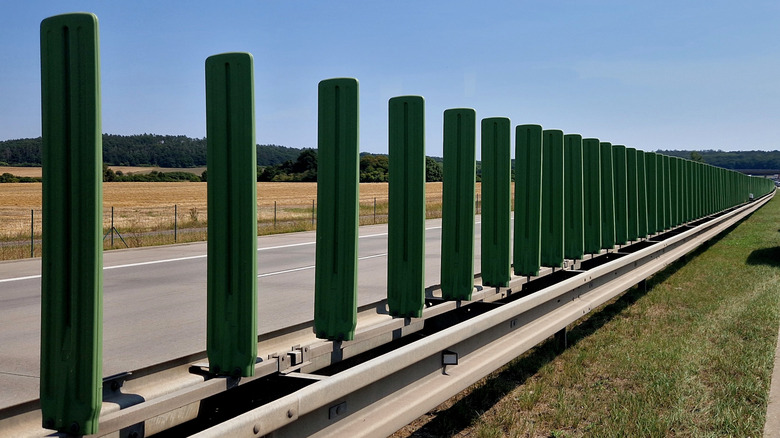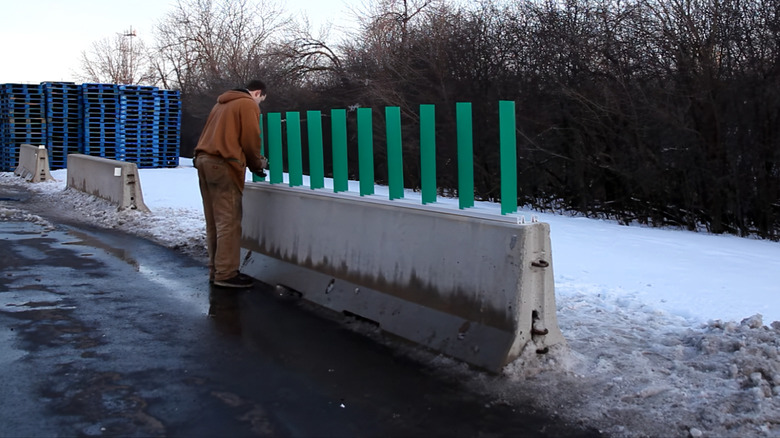What Are The Green Things On Highway Dividers For?
Based on a study done by the AAA Foundation for Traffic Safety, people in the United States invest 17,600 minutes of their time yearly driving their vehicles, covering nearly 10,900 miles on average. These figures are a significant factor in why another study, conducted by the National Highway Traffic Safety Administration, indicated that there were a little over 6 million police-reported traffic accidents in 2023 alone. The statistics underscore the risks associated with operating a vehicle, which can be even more difficult due to a driving condition known as glare. Fortunately, several highways are equipped with a safety device called a glare shield that helps alleviate the dangers caused by glare.
While it may seem like a nuisance or inconvenience, road glare is very hazardous, as it blinds the driver from seeing what is ahead, can cause distractions, and possibly affect driving response times. Nighttime glare is even worse, as it distorts driver vision and can cause half of the road to be bathed in intense light, while the other half is in complete darkness. For two-lane roadways, evening glare is exacerbated by the low light levels, headlights from the opposite lane, and on some highways, the gradient and curvature can also cause glare.
To address the threat of glare to motorists driving on highways, anti-glare shields are installed in areas or roadways prone to glare, including high-volume roads, curved roadway sections, two-lane highways, thoroughfares with difficult sections, and bridges. Made to counter both daytime sun and nighttime headlight glare, it aids drivers by acting as a shield against glare, minimizing road distractions, and even reducing traffic noise, all of which contribute to safer driving. Anti-glare shields are important, but equally vital for safety is understanding best practices for nighttime driving.
An important highway safety feature
Anti-glare shields can be made of different materials, including plastic or metal, and are constructed to withstand wear and tear, weather conditions, and UV radiation. In addition, these devices are designed to be highly visible and aerodynamic to decrease wind resistance. Normally installed on the physical barriers found on roads, including highway dividers, guardrails, and barrier walls, anti-glare shields are affixed to these structures using bolts and fasteners, through their base plate.
Alongside the common modular "paddle type" anti-glare shield, some roadways use a different version called the "continuous anti-glare screen", which is a long, unbroken barrier made from perforated metal sheets. Another type, which looks similar in form and design to the continuous type, is the anti-glare fence, which also serves as an added physical barrier on top of the highway divider. Interestingly, aside from these manufactured devices, some areas can use natural vegetation planted on the median to act as glare shields.
Road safety is greatly enhanced by the use of anti-glare shields, as it safeguards not just motorists but also pedestrians. As drivers need to be focused while on the road, anti-glare shields help drivers maintain lane orientation and better navigate the route. Aside from physical devices like anti-glare shields, road safety now integrates digital technology by using collected and analyzed data to improve car and driving safety, which, alongside the many practical safety gadgets for cars, helps to create a more secure and stress-free driving experience.

